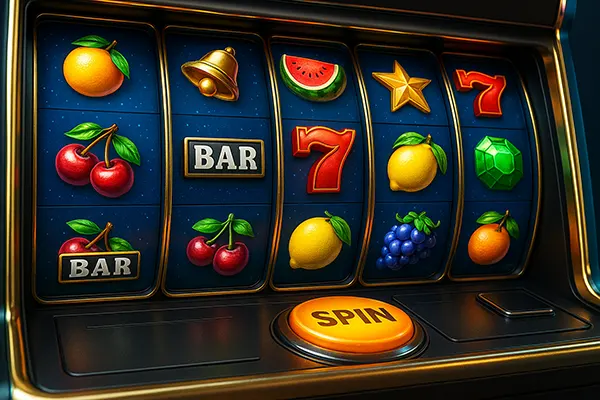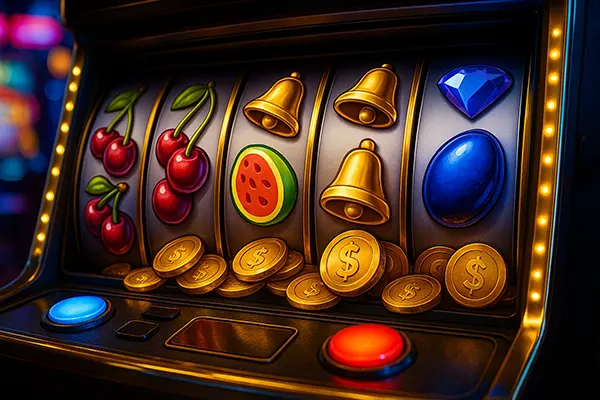
Slots With Paylines and Without — What Modern Players Should Know
Understanding how different slot models work helps players make informed decisions. Payline-based slots and modern no-payline formats use different mechanics, volatility levels and payout structures. Below is a comprehensive explanation of how these systems differ and what each type offers to players in 2025.
How Payline Slots Structure Wins Today
Payline slots remain widely used across land-based and online casinos. These games follow fixed or adjustable lines that determine how symbols must align to produce a win. The number of lines varies from classic 1-line machines to contemporary 50-line and 100-line models.
In many modern titles, paylines may run horizontally, diagonally or in zigzag patterns. Although this system is familiar to players, it requires each combination to follow a precise direction from left to right or, in some newer versions, both ways. This structure offers clear patterns, making it easy to track potential outcomes.
Costs per spin in payline slots depend on how many lines a player activates. This gives a level of control over the total stake. However, players must understand that deactivating lines reduces overall hit frequency, which may influence session length and perceived performance.
Volatility and RTP in Payline Mechanics
Most payline slots aim for predictable payout behaviour. Developers usually set RTP values within the 94%–97% range, depending on licensing requirements and regional regulations. These games frequently include medium volatility, balancing win frequency and prize size.
Payout tables clearly display which combinations correspond to which prizes. Because paylines have fixed structures, game providers can design mathematical models with stable long-term behaviour. This benefits players who prefer steady outcomes rather than extreme variance.
Bonus features in payline slots often follow traditional patterns: free spins triggered by scatter symbols, expanding wilds, or fixed jackpot rounds. Although the mechanics are well-established, many studios continue to expand on them by adding random modifiers or buy-feature options.
No-Payline Slot Models and Their Modern Evolution
No-payline systems, often referred to as “ways to win” or “cluster-based”, have become increasingly popular since 2020 and continue to dominate the industry in 2025. Instead of fixed lines, these games reward symbol combinations that appear anywhere across the reels, following different rules depending on the model.
In “ways to win” formats, such as 243-ways or 1024-ways, any matching symbols on adjacent reels form a win, removing the need for specific line alignment. This increases hit frequency and creates more fluid gameplay. Cluster mechanics, introduced by several leading studios, reward groups of matching symbols touching horizontally or vertically.
Because no-payline systems rely on flexible patterns, providers can incorporate more dynamic features—cascading reels, tumbling symbols, multi-level multipliers and advanced bonus rounds. These mechanics often appeal to players interested in more interactive gameplay.
Mathematical Behaviour of No-Payline Slots
No-payline games frequently feature higher volatility. Titles with 5,000x–50,000x maximum win potential or above often use cluster or multiways logic due to the increased possible combinations. This results in sessions with longer dry streaks but the opportunity for rare high-value outcomes.
RTP values in no-payline models typically range from 95% to 97%, although mechanics with extremely large multipliers may reduce this slightly. Players should verify the RTP version available in their region, as studios often provide several variants to comply with local regulations.
Bonus rounds in these games tend to be more complex: progressive multipliers, symbol collection systems, random reel expansions and avalanche chains. This style suits players who prefer strategic gameplay elements rather than fixed-line predictability.

Choosing Between Payline and No-Payline Slots in 2025
Selecting between the two systems depends on playing style and expectations. Payline slots are straightforward, offer transparent payout rules and are suitable for players who enjoy familiar mechanics. Their lower volatility can help maintain longer gaming sessions.
No-payline slots target players who enjoy dynamic gameplay and substantial potential rewards. They introduce more randomness and interactive features, making them appealing to those seeking higher risk with larger possible payouts. Their design also enables modern bonus structures that are more varied than classic ones.
For informed decision-making, players should review volatility, maximum win potential, hit frequency and feature descriptions rather than relying solely on the slot model type. Both payline and no-payline formats have strong representation in 2025, and choosing the right one depends on personal priorities rather than universal superiority.
Key Factors for Modern Slot Selection
Before starting any slot session, examining the game’s official information panel is essential. Most providers clearly list RTP versions, volatility and maximum win, which allows players to choose titles that align with their expectations and bankroll.
Understanding bonus mechanics is equally important. Some players value consistent smaller hits, while others aim for high-risk bonuses with rare but powerful outcomes. The slot’s underlying model strongly influences how these features behave during long-term play.
Finally, responsible gaming tools offered by licensed operators—limits, reminders, and self-exclusion options—help maintain control. Regardless of slot type, these tools remain a crucial part of safe gaming habits in 2025.
